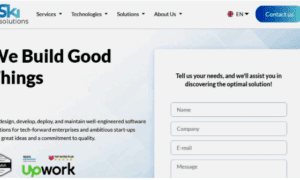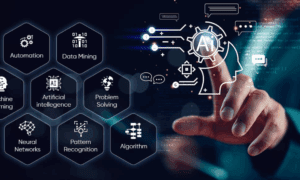The journey of SAP architecture has been marked by continuous evolution and adaptation to meet businesses’ changing needs. SAP, which stands for Systems, Applications, and Products in Data Processing, is a market leader in enterprise resource planning (ERP) software. SAP helps companies of all sizes and industries run their businesses profitably, adapt continuously, and grow sustainably.
At the helm of this ambitious software platform are SAP architects like Venkata Sathya Kumar Koppisetti, an 18-year veteran of the industry best known for his work on S2P (source-to-pay) solutions.
Source-to-pay (S2P) is a business process encompassing all activities related to procuring goods and services, from identifying the need for a product or service to making the final payment to the supplier. Koppisetti’s work on S2P has given him insight into the sector’s potential future.
The Evolution of SAP Architecture
One of the most significant advancements in recent years is the adoption of SAP S/4HANA, an intelligent ERP suite designed to run on the in-memory database, SAP HANA. This transition represents a significant change from traditional ERP systems, offering real-time data processing and analytics capabilities.
“Moving to SAP S/4HANA is not just an upgrade; it’s a transformation. We’ve eliminated and replaced the old systems with reduced total costs, instant data acquisition, and overall more efficiency,” says Koppisetti.
Integrating artificial intelligence (AI) and machine learning (ML) into SAP systems is a branching extension of what S/4HANA has already brought to the industry. Though still in the early stages, AI-driven automation can revolutionise business processes, from supply chain management to customer relationship management.
The global artificial intelligence market, valued at USD 454.12 billion in 2022, is projected to hit around USD 2,575.16 billion by 2032, progressing with a compound annual growth rate (CAGR) of 19% from 2023 to 2032. With such significant market expansion, experts believe that AI-operations integration into every facet of the tech sector is inevitable.
“AI and ML are integral to the future of SAP architecture. Even in rudimentary forms, they can automate complex processes, reduce manual intervention, and take productivity to the next level,” Koppisetti explains.
Embracing Cloud Computing and Blockchain
Cloud computing has become a cornerstone of modern enterprise software architecture. The shift toward cloud-based solutions offers unparalleled scalability, flexibility, and cost-efficiency. SAP’s cloud offerings, including Kopppisetti’s S/4HANA Cloud, are witnessing widespread adoption as organisations seek to modernise their IT infrastructure and embrace digital transformation.
Cloud computing is the on-demand delivery of computing resources, such as servers, storage, databases, networking, software, and analytics, over the internet. This model allows businesses to access and use these resources without investing in and maintaining physical infrastructure. “Cloud computing takes all the advantages of site computation and none of the drawbacks. It’s a miracle solution many businesses have been interested in for decades,” Koppisetti notes.
In addition to cloud computing, blockchain technology is also making significant inroads into SAP architecture. By providing a decentralised and secure ledger, blockchain enhances transparency and security across various business operations—even in government systems where cybersecurity is the utmost priority.
“When most people hear ‘blockchain,’ they think of cryptocurrency. The blockchain system is so much more than that. Integrating it into SAP systems ensures critical information is shared and validated more efficiently,” says Koppisetti.
The Future of SAP: Trends and Innovations
Several key trends are to shape the future of SAP architecture. One trend is the increasing focus on sustainability. SAP prioritises tools like the SAP Sustainability Footprint Management solution to help organisations track and manage their carbon footprints.
“It goes without saying that big data centres aren’t exactly carbon-neutral. Sustainability is no longer a choice; it’s a necessity,” Koppisetti emphasises. “SAP has developed solutions designed to help businesses achieve their sustainability goals as efficiently as possible.”
Another emerging trend is the emphasis on user experience (UX). With its intuitive and responsive design, SAP Fiori is specifically created to enhance user engagement and productivity. By prioritising UX, SAP ensures its solutions are functionally robust and user-friendly.
“User experience is critical to the success of any software solution. SAP Fiori’s design principles make it easier for users to navigate the system. Of course, the happier the user, the happier the vendor,” Koppisetti asserts.
The future of SAP software architecture is bright, driven by new technologies that challenge the limits of what was previously thought possible.
As Koppisetti aptly puts it, “The future of SAP architecture lies in the future of the world. It could be AI or it could be reducing carbon footprints. Regardless, we will work to adapt and meet whatever may come.” With AI, cloud computing, blockchain, and sustainability advancements, SAP is well-positioned to lead enterprise software, delivering solutions that drive efficiency and growth.



































